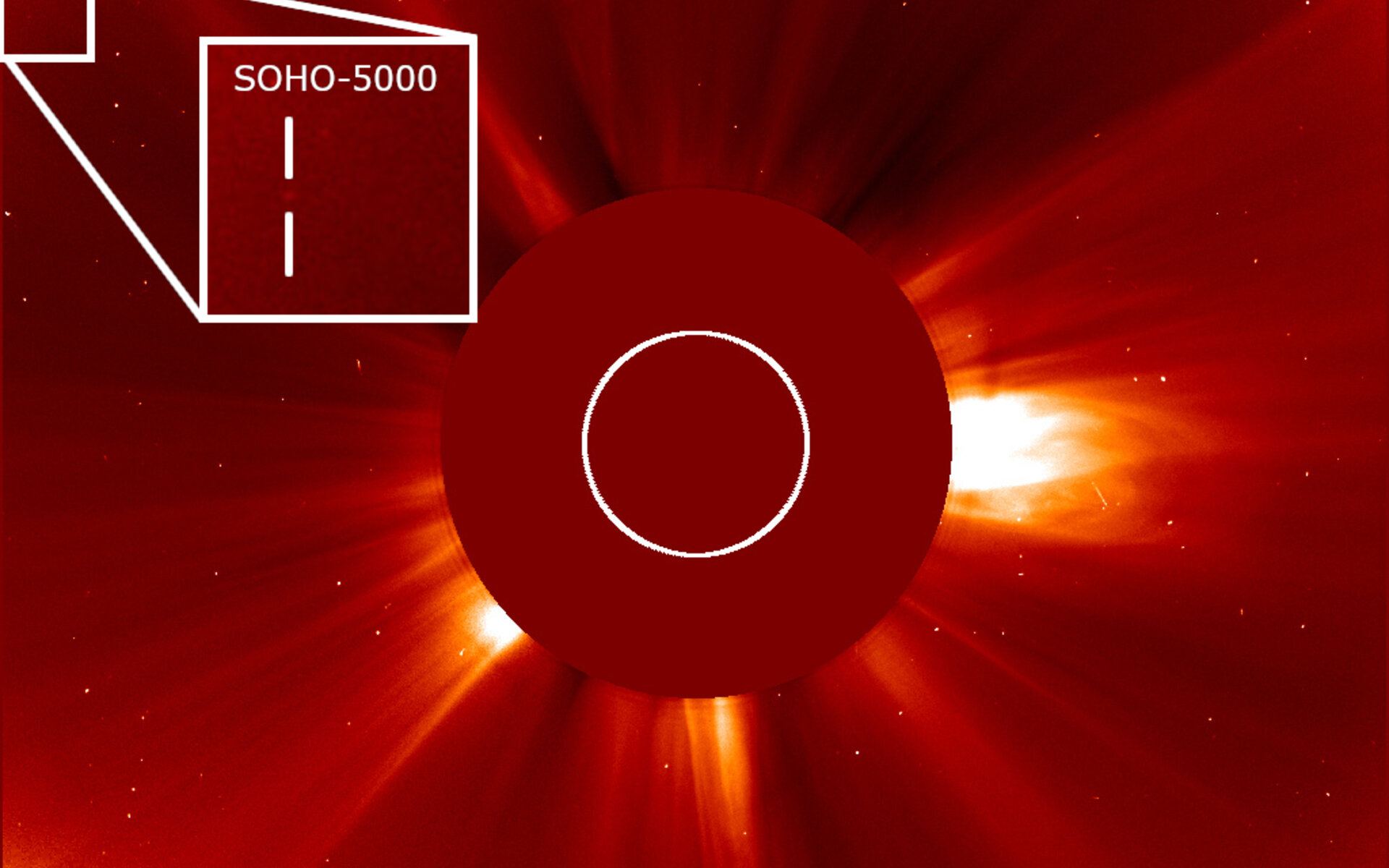The Solar and Heliospheric Observatory (SOHO) was designed to examine the Sun, but as a side benefit, it has been the most successful comet hunter ever built. Since early in the mission, citizen scientists have been scanning through the telescope’s data, searching for icy objects passing close to the Sun. An astronomy student in Czechia has identified 200 comets in SOHO data since he started in 2009 at the age of 13. He recently spotted the observatory’s 5,000th comet.
“Prior to the launch of the SOHO mission and the Sungrazer Project, there were only a couple dozen sungrazing comets on record – that’s all we knew existed,” said Karl Battams, who is the principal investigator for the Sungrazer Project, the citizen science project that was launched after so many comets started showing up in the data. “The fact that we’ve finally reached this milestone – 5000 comets – is just unbelievable to me.”
SOHO moves around the Sun on the sunward side of Earth, where it enjoys a clear, uninterrupted view of the Sun, by slowly orbiting around Lagrange point L1. That means it has been observing the Sun 24 hours a day, 365 days a year without interruptions since shortly after it launched in 1995. With this view, SOHO can easily spot the kind of comet that’s known as a sungrazer – so named because of their close approach to the Sun. Many of these comets don’t survive their close pass to the Sun.
Hanjie Tan is the student who discovered the 5,000th comet. Inspired by his many years of searching for comets, Tan is now an astronomy PhD student in Prague, Czechia, studying comets and asteroids. The small comet that he spotted is part of the ‘Marsden group’ of comets, named after the British astronomer Brian Marsden, who first recognized the group based on SOHO observations. Marsden group comets are thought to be pieces shed by the much bigger Comet 96P/Machholz, which SOHO observes as it passes close to the Sun every 5.3 years.
“The Marsden group comets represent only about 1.5% of all SOHO comet discoveries,” said Tan in an ESA press release, “so finding this one as the 5000th SOHO comet felt incredibly fortunate. It’s really exciting to be the first to see comets get bright near the Sun after they’ve been travelling through space for thousands of years.”

The SOHO mission has now been operational for almost 30 years. It’s almost been lost twice and is now flying without the use of its gyroscopes, which help it point precisely. Engineers have figured out a way to work around the issue. It’s longevity has not only provided an incredible treasure trove of data about the Sun, but it also has allowed the spacecraft to become the most prolific discoverer of comets in astronomical history.
Related: 22 years of the Sun from SOHO
Launched in 1995, SOHO studies the Sun from its interior to its outer atmosphere, providing unique views and investigating the cause of the solar wind. During the last three decades, SOHO has become the most prolific discoverer of comets in astronomical history.
“A huge congratulations to EVERYONE who has ever contributed to Sungrazer,” Battams said on Twitter. “Hanjie may have found #5000, but it took 24-years of combined volunteer ‘amateur’ scientist efforts to find the other 4,999. This was a team effort, and I’m so thankful to all who have helped!”

